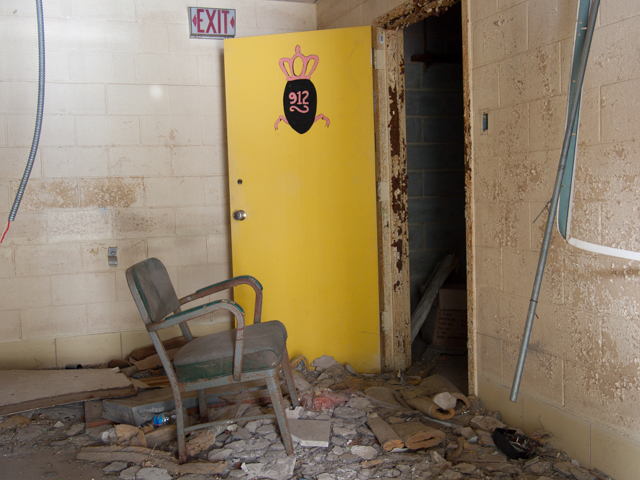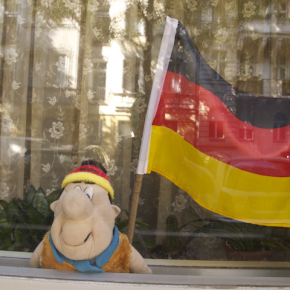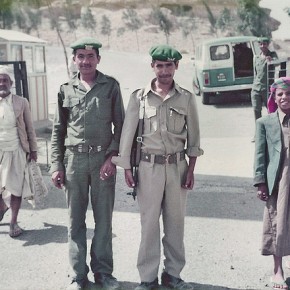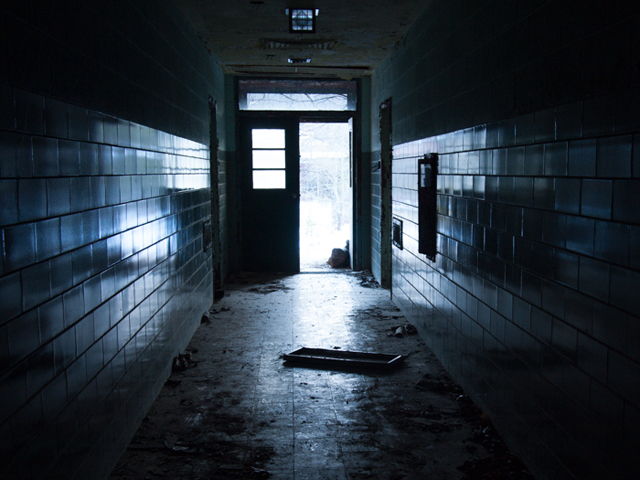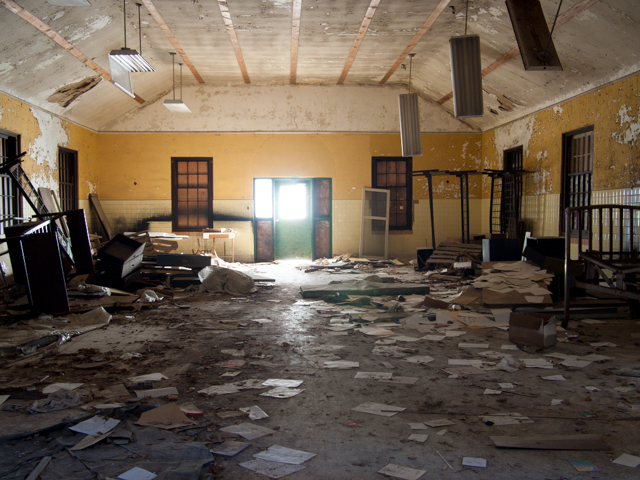On our first trip to Forest Haven Asylum, the trail dumped us in front of an imposing brick and cement block building. Ugly. Institutional. Lacking the gothic mystery of early 20th century asylum architecture. We decided to pass it by. Later, though, I discovered that the vast cement monstrosity epitomizes the systematic warehousing of humans in the United States.
Here there were no more allusions to pastoral healing, as there were in the original structures my friend and I explored the first day (which you can read about here). No, this place was constructed for efficiency and storage, a filing cabinet for the lost, forgotten, and voiceless. There was no charm in the block building that faced us with its mammoth walls. It offered not a single glimpse of its interior. We were faced with a wall of cement and brick walls that possessed no aura of the deeply embedded history of America’s Asylum Culture. There was no gothic or spooky undercurrent. No ghostly apparitions of mad doctors lurking in the windows. In fact, there were no windows. It was just an imposing, cold, heartless bureaucratic lump. Like something from Eastern Europe, only situated on the outskirts of Washington DC, that paradigm of democracy.
I became curious. I wanted to know more about this imposing and seemingly impenetrable monolith. So I did a little more reading on Forest Haven, and I discovered that the building has a name. The Curley Building. It is an expansive modular interconnected building that was constructed in 1971, a time when budget cuts meant that there were fewer resources to sustain a façade of recovery and reintegration. The philosophy stated when constructing the building was that it would allow more humane housing for the mentally and emotionally compromised people being warehoused at Forest Haven. The truth of the matter is that the construction served one purpose: it allowed for more capacity, more room to store more living bodies.
The architects touted the fact that the Curley Building had separate interconnected wards to allow the residents to feel like they had more privacy. It had its own self-contained school for the many children who would be abandoned inside its walls. It had tiny walled-in courtyards for fresh air, which I’m sure anyone inside the building desperately needed. But it also had no way out. The prospect of freedom was an illusion.
Banks of walls contain tiny isolation cells. Adult-sized metal cribs still have remnants of shackles where the residents were locked-down. Thick metal doors seal the Curley Building tight against the outside world. Some accounts state that the most seriously afflicted were housed in the Curley Building. Forest Haven modeled itself as being a place not for the “insane” but rather the “retarded.” So the people who were too “retarded” to use the bathroom on their own, otherwise known as the incontinent, stayed strapped to beds in the Curley building. They spent their lives pissing in plastic jugs and bedpans or just on themselves. Dozens of bedpans and plastic urinals remain piled in corners of the building. Often right next to canned foods and plastic feeding tubes. Choking was the most common form of death at Forest Haven.
Once the residents were “potty trained,” they were moved from the Curley Building to one of the original cottages on at the facility where they could sit and rot in a more pastoral setting. In one horrifying account from Forest Haven, a resident who had an illness which caused her to eat uncontrollably was tied to a toilet in the bathroom of one of the cottages. She was left unattended, managed to free herself from her restraints, but then choked to death eating her own feces. This story is true and documented in many of the allegations and lawsuits that slammed Forest Haven for its inhumane treatment of human beings which were housed there like so much garbage during its seventy-year existence.
It makes sense that this building constructed in the 1970s is so horribly institutional. This is the time when government budget cuts left mental health facilities in economic ruins. So why not build what looks literally like a warehouse to house this “problem” that no one wants to address or fix? In its history, the Curley Building housed the mentally ill, the mentally retarded, orphaned children, and simply those who no one wanted. Many arrived at the Curley Building with full mental faculties, but exposure to such horrendous conditions and not being allowed fresh air or freedom caused them to emotionally and physically regress. Orphaned children with normal neural capacity became “retarded” from the environment. It was a sick institution that caused their sickness.
There are plenty of testimonies from former counselors, doctors, family members and volunteers who witnessed the Curley Building’s warehousing of human lives – bodies stacked on top of bodies, dosed with Thorazine until they were left practically dead. Reporters snuck onto the premises with the aid of rebellious and mortified staff and witnessed the horrors. Adults were strapped in metal cribs. Others lay in diapers on the floors. Children were dumped into a children’s unit with smiley faces and Peanuts characters painted on the walls. A public official visited Forest Haven and said it was the most horrific thing he had ever witnessed in his life.
One volunteer noted: “My church group visited patients every week. What wonderful people, living in awful conditions. I remember singing, playing cards, and telling jokes with them. Some heavily medicated adults lived in cribs. Others never saw daylight. Patients were scared – of staff, of medications, and of leaving the institution.”
Of course, the workers needed jobs. With the budget cuts, Forest Haven couldn’t hire social workers, psychologists, and psychiatrists or offer job training and education. They paid poor untrained people crap wages to keep the warehouse functioning, which basically meant keep the residents medicated, immobilized and unable to advocate for themselves or act on their own behalf. This place was like a concentration camp for the socially bereft.
The minute I stepped inside the Curley Building, I broke out in a sweat despite the fact that the temperature was below freezing. The building may be a cement block, but the layers of misery trapped in those walls seethe and ooze with human suffering. The entire place seemed to be breathing on me and closing in on me. I entered through a side door and shot a photo of a chair facing a dark stairwell under an exit sign, as if there was ever any exit other than death for the people warehoused at the Curley Building.
I worked my way down a dark hallway where I found a plastic portable urinal lying in a cement hallway. This single item sent my legs shaking. I looked all around me. A spider web of dark hallways strung in spokes. My friend and I had to pick which one to dare to walk down.
The first hall led me to a room where metal cribs lay abandoned. I walked through the door and right into one of the cribs. Someone had lit a fire on its charred bed springs. Other cribs leaned akimbo in the vacuous room. Screams whispered through the winter wind outside. The weight of the bodies that lived and died in those cribs pressed in on me in the hold winter air. The din of howls echoed from charred walls with graffiti reading “LOST SOULS” scrawled across their surface.
The psychic overload of this place moved to a place beyond “making art.” I was bearing witness to the thousands of neglected people who suffered and died within these walls. It was all I could do to set up my tripod and get the cribs in the frame of the photo. This was not art. This was a horrific testimony to the inhumanity of our society. Outside the broken windows, play equipment rusted in the snow. Cement walls towered in each enclosure. There was no way out.
We went deeper and deeper into the building. In one room, an old sofa was pushed against a back wall. The ceiling tiles had become roof tiles, or floor tiles had simply hosted an uprising and said “Fuck this.” I found a small, plastic-wrapped piece of medical equipment. It was tubing and part of a pump to suction food from choking people. The records indicate that the vast majority of residents at Forest Haven died from aspiration pneumonia, or choking on their food and then breathing it in while tied to their beds. And this all happened a half hour from our nation’s capital.
The rooms were piled with beds, water pitchers, urinals, rusted cans of food. I don’t need to tell you the irony of the people being bound to the beds, then fed the food in the cans that would choke them. More suction tubing, more urinals, more rusted cans, more ghosts. The recreation rooms echoed with emptiness. Melted record players, clowns holding strings of sausages, and thousands of staring eyes saying, “Remember me. I had a name once.”
In some places, names were stenciled on walls. In others, patient records were strewn across floors. No privacy in death, either. The patients’ lives had been reduced to the tattered sheets of a tattered bureaucracy. Human litter. Relics of a bureaucracy gone bad.
My chest was tightening with the reality of what I was witnessing. The beds increasingly seemed to feel like people. I could see bodies on them calling for help. I was desperate to get out of this awful building, but we couldn’t find our way out. We just kept going deeper and deeper into the cavernous space. Dark halls led to more dark halls. Gurneys sat upright facing busted out windows as if ghosts were catching a view. Rooms were filled wall to wall with beds stacked on top of beds. I could feel heads turning toward me asking me the same question I was asking myself: How do I get out?
I eventually would learn that the Curley Building comprises 68,000 square feet of labyrinthine space all enclosed by an insurmountable cement wall and locked down with thick metal doors. And I was lost in the middle of it. I stood in a room filled with beds and cried out, “I can’t handle this! I need to get out now!” I felt I would choke on my claustrophobia. Finally, we opted to climb out a window in a room where we discovered a lone roller skate on a desk and spotted an open door in the wall of the courtyard. We ran past bobbing turtles on rusty springs in the snow.
I stepped outside that door onto the snowy grounds outside the wall and breathed fresh air like I never breathed before. Buildings sprawled across the landscape. Their windows stared out at us like dark eyes. “Where to next?” I asked. I grabbed my tripod and marched onward on the ice. Then I collapsed to the ground. “I think I need to get out of here for a while.”
All photographs courtesy of the author. Look for the rest of this story in future Souciant pieces. To see more photos, visit the gallery on the author’s website.
